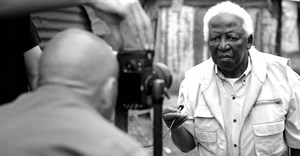Can Nikes really help you run faster?

While those results are astounding, how much of that can be attributed to the shoe technology and how much of that was due to the brand power of Nike and its psychological effects on those runners? And here’s a more interesting question: if you own a pair of Vaporflys, could simply reading about these results make you run faster?
Based on a study I conducted a few years ago on the placebo effect of brands, the answer is a resounding yes.
Priming + Expectation + Desire = 'Brandcebo'
A few years ago, as part of my doctoral dissertation, I investigated the presence of a placebo effect in brands. I devised a simple experiment using the most brand-conscious subjects out there: teens. In the first trial, I had two groups of middle schoolers run on a 50-meter track while wearing Nikes disguised as off-brand shoes. Then, I performed a demonstration on Nike’s amazing properties. I ran a final trial, but with one group running with Nike shoes and the other group still wearing “off-brand” shoes.
The results were astonishing: even though participants were all wearing the same Nike shoes, the students who knew they were wearing Nikes significantly improved their time, while the students who thought they were wearing “off-brand” shoes ran much slower than before!
And it wasn’t because of a feat of engineering. Like a placebo, it was Nike’s reputation and the students’ high expectations that resulted in a genuine change in perception and performance.
What exactly was happening? I’ve found that there are three elements that transform a brand from a well-known product to a household name powerful enough to drive consumer behaviour and performance. Brand placebo, or 'Brandcebo', is created when the following three elements combine: Priming, Expectation, and Desire.
Priming
Priming is all about creating a certain mindset around your brand and product. When I performed the demonstration for the students, I was doing something more than just spreading awareness of the Nike shoe—I was priming the brand’s superior capabilities by establishing its ethos or credibility.
Similarly, when a publication like Wired lists all the famous runners who broke records while wearing the Vaporfly, it makes an undeniable connection between Nike shoes and world-class athletes. It’s these connections that build up the mythos of Nike as THE runner’s shoe and the belief that with this shoe “I would run faster.”
Expectation
Nike’s done something more than change consumers’ perception of their brand—they’ve created a genuine expectation of superior performance with their products. A few ways they’ve done that is by creating a clear sense of brand promise, sometimes through statistics or high-tech narratives—like ones in the New York Times article.
The very format of the study and the scientific connotation behind it make Vaporfly’s superiority a verifiable truth. But, when consumers read that the Vaporfly is 4% faster than other Nike shoes or “the shoe uses a special kind of very light foam, found in airplane insulation” in esteemed publications like the New York Times or Wired, they’re built up to expect a great performance!
Desires
It’s obvious what professional runners want: to win. The rest of us? We go for the Nikes because they tap into our innate desire to grow, and Nike convinced us that (with them) we can “Just do it.” It’s all explained by the Self-Expansion Theory, a psychological concept that lays out our desire to grow emotionally, intellectually, through relationships, and so on. With the right shoes, maybe we’ll be faster, get fitter, play better, win that foot race—and through countless ad campaigns and their global brand, Nike’s done an incredible job of connecting to that desire.
And what better mirror to hold up to the consumer than one of the most widely-read publications in the world?
It’s entirely possible that after reading this article Vaporfly owners will experience a boost in their performance. The technology behind the shoe won’t change—but the owner’s mindset behind it will definitely be different, whether they know it or not!
Harness the power of placebo
When the mind is so powerful that a sugar pill can help someone feel better, it makes sense that the household name of Nike and testaments of storied publications like The New York Times can mean the difference between just another marathon time and a record-breaking finish. And in a sport where every second counts, marketers and advertisers alike need to harness the power of placebo to make sure it’s their shoe that will get people over the finish line.
If anything, this article, apart from being an incredible piece of PR, is a great example of an effective creation of brand placebo. And when professional runners and Nike fans alike come across this study, it’s possible that this article acts as a kind of self-fulfilling prophecy, which leads to improved performance. It’s priming, expectation, and desire at work – you couldn’t ask for a more effective piece of branding.
So, the next time you lace up, think about whether you own the shoe, or the shoe owns you.



















